Sell custom products with Printify
Amazon SEO is not optional – it’s essential for your store’s success. Every month, over 98 million people make their purchases through this eCommerce giant.
Grab their attention and amplify your sales by understanding the ins and outs of Amazon’s search engine.
Key takeaways
- Optimizing your product listings with target keywords, keyword variations, and high-quality images is crucial for improving visibility in customer’s search results.
- Use bullet points on the product detail page – nicely formatted descriptions can lead to a higher conversion rate.
- Regularly perform keyword research to stay ahead of market trends and ensure your product titles and descriptions contain relevant and complete information.
- Utilize Amazon tools and Amazon Seller Central analytics to track your SEO performance and adjust your strategies as needed.
- Incorporate Amazon PPC campaigns to complement your organic search results, targeting tail keywords to improve your product rank.
What is Amazon SEO?

Amazon search engine optimization (SEO) is the practice of enhancing product listings to rank higher in the marketplace’s search engine results.
Why does this matter? Amazon is an eCommerce giant with millions of active users, so achieving high visibility on this sales channel can dramatically boost your sales volume.
Unlike traditional SEO, which caters to a wide range of search purposes, Amazon SEO focuses on connecting products with buyers who have a clear purchase intent.
This distinct approach highlights Amazon’s emphasis on individual product performance over broader brand recognition. A singular focus means a well-optimized product listing can lead to direct sales.
The components of Amazon SEO
- Amazon search box. The starting point for most shoppers is the Amazon search box, where precise keyword research pays off. Input from this search influences which products are immediately visible to potential buyers, making it a critical focus area for sellers.
- Search filters. Amazon offers many filters, including price, customer reviews, and shipping options, to help users narrow down their choices.
- Amazon search results page (SERP). The SERP displays your SEO efforts. Here, products are listed based on their relevance to the user’s search query.
- Bestseller rank. This rank reflects your product’s sales volume relative to competitors within the same category. Both direct and indirect SEO efforts impact your ranking, which can increase your product’s visibility.
- Advertising. Paid ads on Amazon can complement organic SEO strategies, offering another avenue to increase product visibility. Through advertising options, like Sponsored Products, you can target specific demographics.
What makes a product rank on Amazon?

Amazon’s search algorithm is known as A10, having evolved from the A9 version. This algorithm determines product visibility in response to a customer’s search query, considering multiple factors to present the most relevant results.
Understanding the algorithm’s nuances and how it evolved can help optimize your product listings for better visibility and sales.
Let’s briefly cover what the A9 algorithm focused heavily on:
- Keyword relevance. Aligning product listings with customer search terms, including keywords in titles, descriptions, and backend search terms.
- Conversions. The measurement of how often a product is purchased relative to how frequently it’s viewed. High conversion rates would indicate your product’s value to Amazon customers.
- Sales history. Demonstrating a product’s popularity and reliability through consistent sales would contribute to higher rankings.
The A10 algorithm builds upon the foundation of the A9 but shifts the emphasis toward factors that enhance the customer’s shopping experience.
While keyword relevance and conversions remain important, A10 places greater importance on:
- Organic sales. Prioritizing products that achieve sales through natural search discovery over those relying on paid promotions.
- External traffic. Valuing the quality of traffic coming from outside Amazon, indicating a broader appeal and relevance of the product.
- Seller authority. Considering the seller’s overall performance, including feedback and product returns handling, reflects their reputation on the platform.
To succeed under A10, focus on driving organic engagement and diversifying traffic sources. This includes optimizing listings for SEO, like leveraging social media to direct high-quality traffic to your Amazon products.
Maintain comprehensive, well-optimized product listings that clearly communicate the value and relevance of your product to potential buyers.
Consider the role of Amazon PPC (pay-per-click) campaigns not just as a direct sales tool but as a means to enhance organic ranking through strategic keyword targeting.
Quick tip
Integrate Amazon PPC into your strategy to complement organic efforts. Use it to boost visibility and contribute to the long-term organic ranking of your products by improving conversion rates.
Make it happen today!
How to improve SEO on Amazon

Implementing Amazon SEO requires adherence to best practices. You have to continuously monitor your performance and adapt your Amazon SEO strategy based on shifting market dynamics and algorithm updates.
Boosting your Amazon SEO is like fine-tuning a powerful engine. The goal is to ensure each component works in harmony, propelling your listings to the top of Amazon’s search results. Let’s explore these components.
Use relevant keywords
Keywords are the cornerstone of Amazon’s SEO strategy. They are the bridge between what buyers are searching for and the products you are offering.
By understanding and implementing the most suitable keywords within your listings, you significantly increase your visibility in search results.
Do:
- Conduct keyword research. Deep dive into various tools (we’ll provide suggestions shortly) and Amazon’s own search bar suggestions to find terms your audience is looking for. Incorporate these organically into your listings.
Don't:
- Resort to keyword stuffing. This outdated tactic can harm your visibility and credibility.
Quick tip
The Amazon search engine is a treasure trove of keyword ideas. Start typing a product-related term in the search box and note the autocomplete suggestions. These are terms real shoppers are using, giving you direct insight into customer search behavior.
Optimize product titles
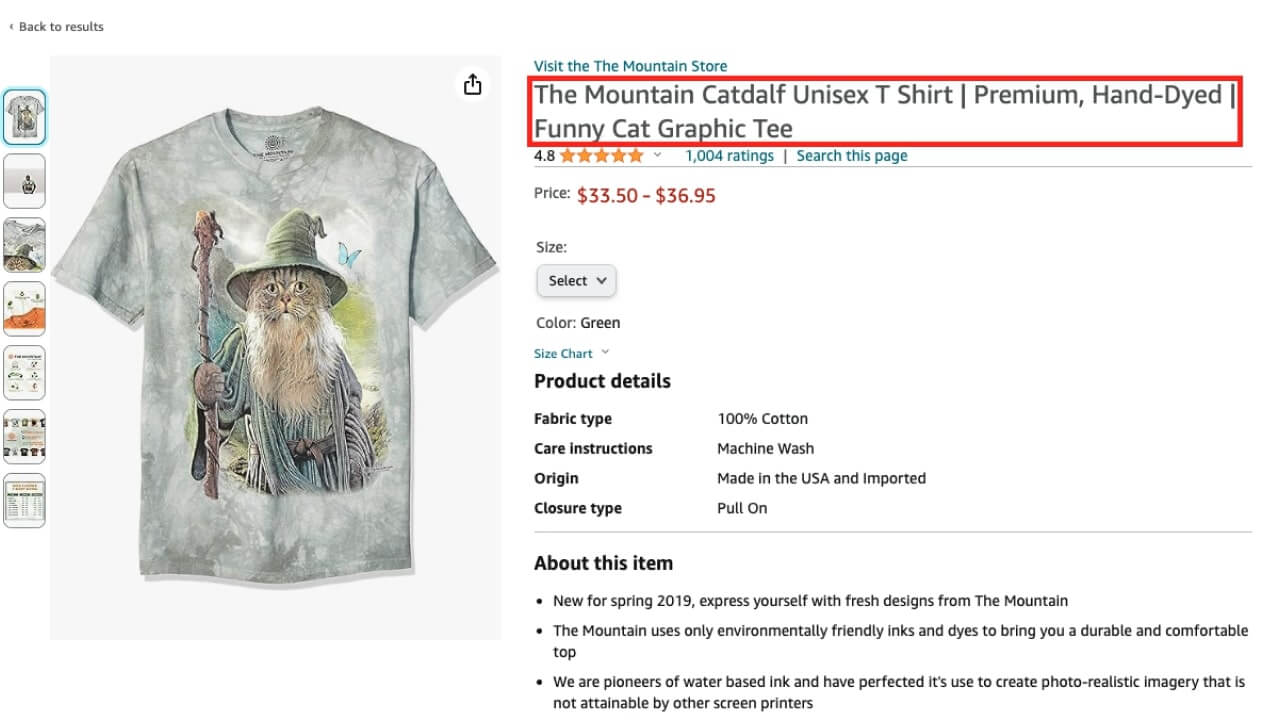
The product title is the first impression customers have of your listing. An optimized title clearly communicates what your product is, who it’s for, and why it’s beneficial, all while incorporating important keywords.
Do:
- Make your product titles descriptive yet concise, ensuring you include critical keywords without sacrificing readability.
- Highlight your product’s most important features, such as brand, type, color, and size.
Don't:
- Clutter your title with irrelevant information or too many keywords, which can confuse potential buyers.
Quick tip
Make the most of Amazon’s character limit for product titles by including your most important keywords first. This ensures visibility even on mobile devices where character display is limited. For deeper insights, Amazon’s Seller Central offers guidelines and best practices for title optimization.
Write useful product descriptions
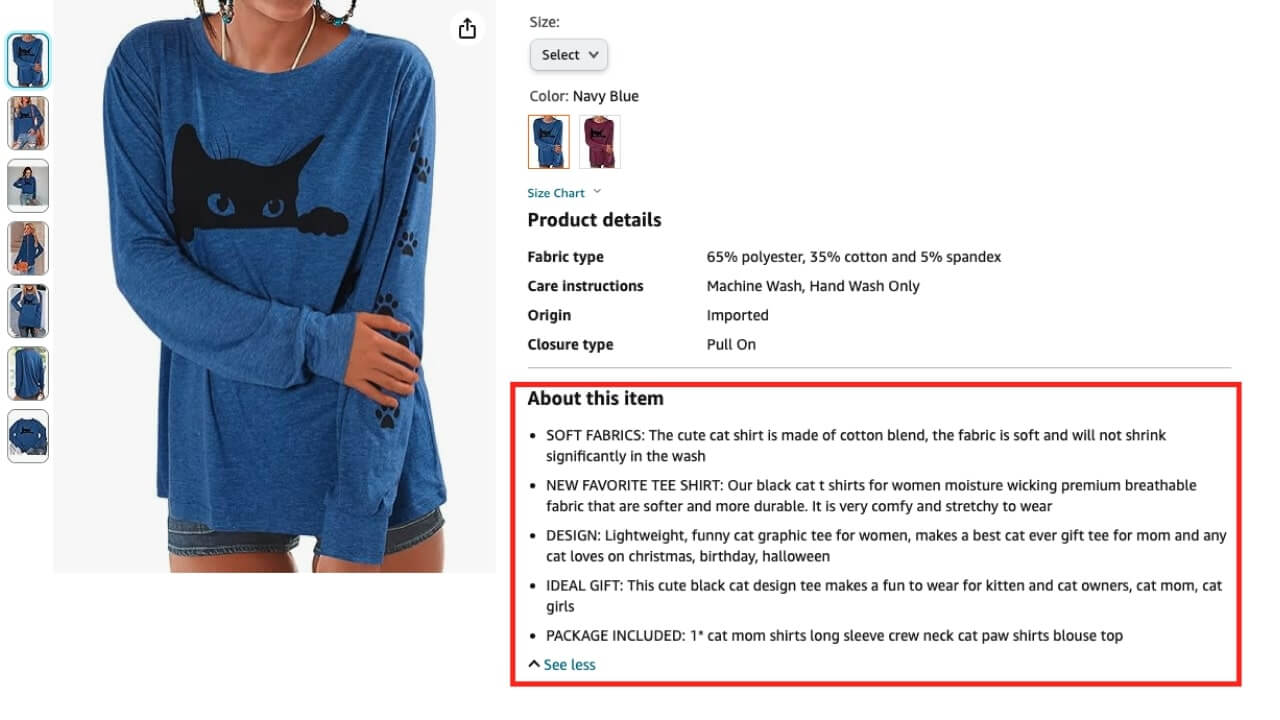
A compelling product description provides valuable information that convinces shoppers to buy. It’s an opportunity to expand on your product’s features, benefits, and differentiators, telling a complete story of what it is and why it’s worth purchasing.
Do:
- Use this space to connect with your audience by highlighting how your product solves a problem or enhances their life.
Don't:
- Simply list features without explaining their benefits or recycle content that readers can find elsewhere in your listing.
Quick tip
The Amazon Brand Registry offers enrolled brands access to Enhanced Brand Content (EBC). Use this feature to include more detailed product descriptions with images and text placements, making your listings stand out and potentially improving conversion rates.
Highlight key listing details with bullet points
Break down your product’s selling points in an easily digestible format. Bullet points are excellent for quickly conveying your product’s value to potential buyers scanning through your listing, similar to how we’re using bullet points throughout this article.
Do:
- Focus on the benefits of your product’s features, clearly articulating why each point matters to the customer.
- Prioritize the most valuable information when optimizing product listings.
Cons:
- Waste bullet points on information that doesn’t directly communicate value or appeal to your buyer’s needs and desires.
Collect positive ratings and reviews

Ratings and reviews influence buyer decisions and play a role in Amazon’s search rankings. Both customers and Amazon’s algorithm are more likely to view a product as trustworthy and high-quality if it has a higher number of positive reviews.
Do:
- Actively encourage satisfied customers to share their positive experiences in reviews. This can be done via follow-up emails and social media.
Don't:
- Engage in any practices that could be seen as manipulating reviews, such as offering incentives for positive feedback.
Reply to customers’ questions
The question and answer section of your listing is a direct line of communication between you and potential buyers. Prompt and informative responses can significantly influence purchasing decisions and improve your brand’s reputation.
Do:
- Regularly monitor and respond to questions with accurate, helpful information.
- Use this opportunity to sneak in some more keywords, where relevant.
Don't:
- Ignore this section or provide vague and non-committal answers, as this can frustrate potential buyers and eventually affect your product rankings.
Ensure fast shipping
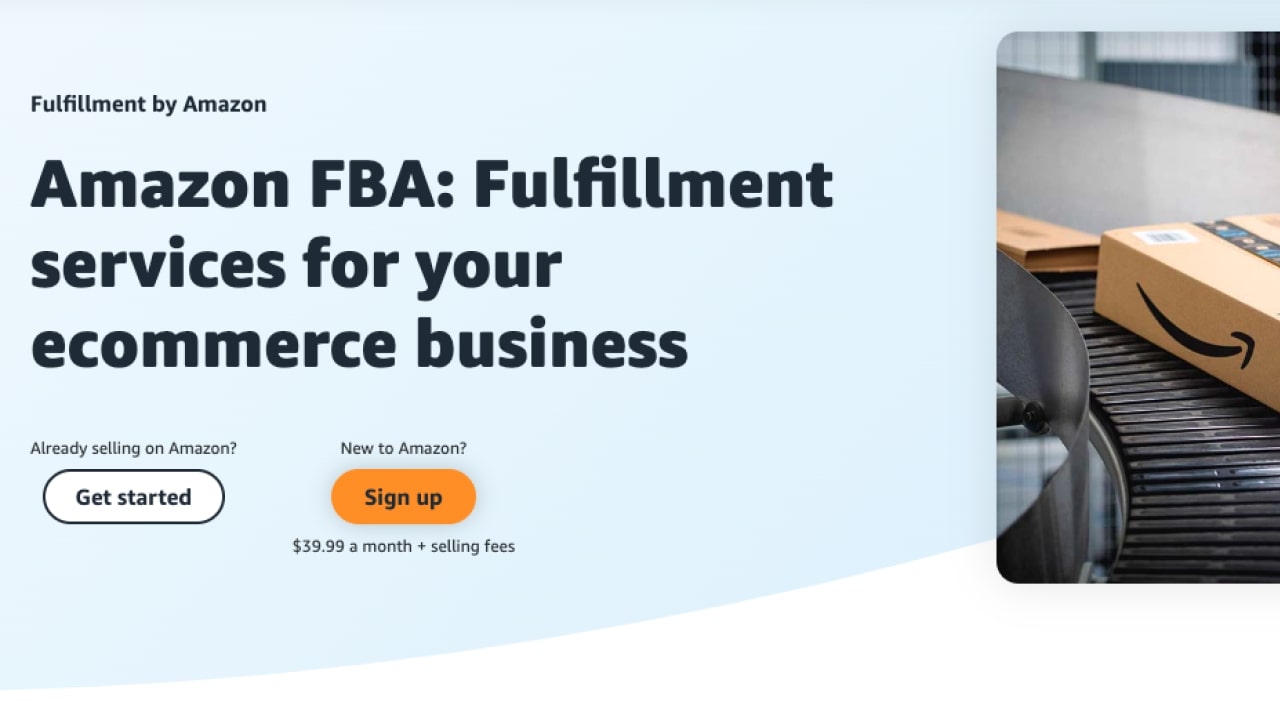
Shipping speed is a crucial factor in customer satisfaction and significantly influences your product’s visibility on Amazon. Fast, reliable delivery is key to winning and retaining customer trust.
Leveraging Amazon’s fulfillment network through Fulfillment by Amazon (FBA) can optimize your shipping process, providing customers with the quick delivery service they hope for.
This enhances the customer experience and boosts your product’s competitiveness for the Featured Offer (formerly Buy Box) and search rankings.
Do:
- Explore all logistics options, including FBA, to provide the fastest shipping possible.
Don't:
- Overpromise on delivery times you can’t consistently meet. This will lead to disappointed customers and potentially negative feedback.
Try to get Amazon featured offer
Securing the Featured Offer spot can catapult your product’s visibility and sales on Amazon. This sought-after position is Amazon’s vote of confidence in your product’s price, availability, and customer satisfaction metrics.
Do:
- Optimize every aspect of your listing and seller performance to meet the criteria for the Featured Offer.
Don't:
- Neglect any factors, such as stock levels or seller ratings that could impact your eligibility for this prime positioning.
Add backend search terms
Backend keywords are a behind-the-scenes tool to improve your product’s discoverability. These invisible keywords help the Amazon algorithm understand what your product is and match it to customer searches.
Do:
- Use all available slots for backend keywords to cover relevant search terms that didn’t fit in your visible listing.
Don't:
- Repeat keywords from the front end of your listing or include irrelevant terms that could dilute your product’s relevancy.
Quick tip
Keep your backend search terms focused and relevant. Avoid using competitor brand names or irrelevant terms, as the Amazon algorithm may penalize your listing for such practices.
Use relevant and high-quality product images
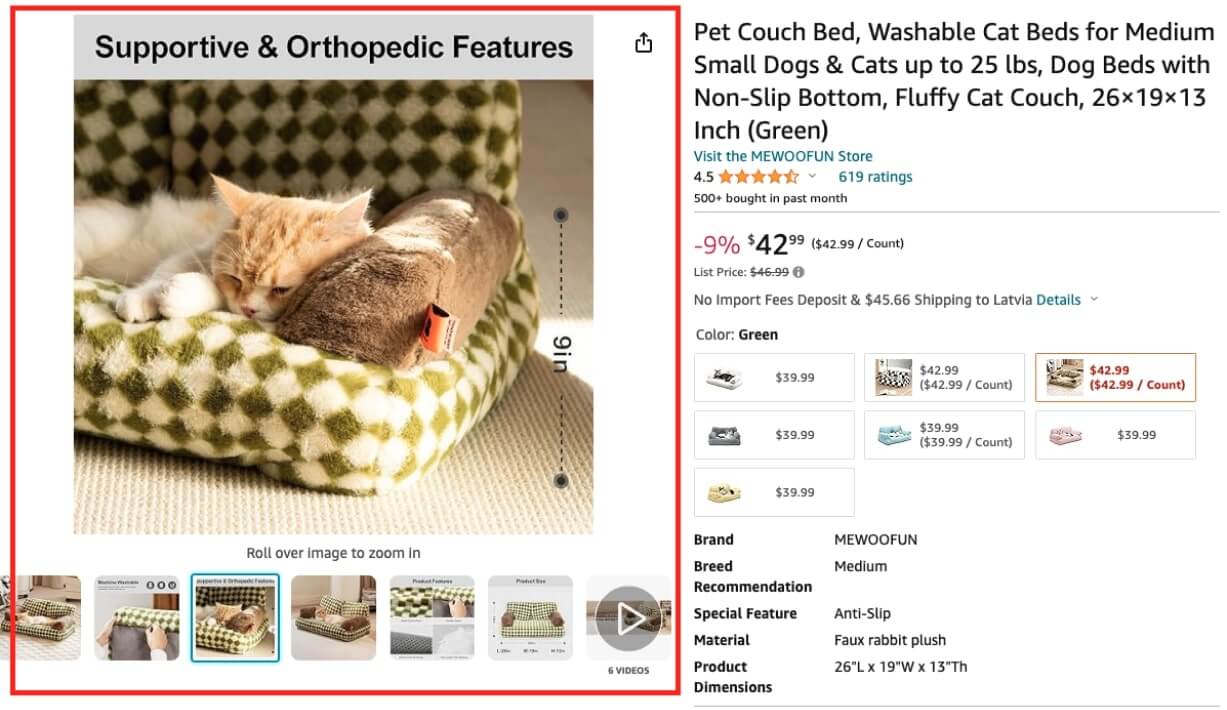
Product photos are as important as the written content of your listing. High-quality, relevant images can dramatically enhance your product’s appeal, providing shoppers with a clear, attractive visual representation of what they’re considering.
Do:
- Invest in professional photography that highlights your product’s features and benefits.
- Follow Amazon’s image guidelines, including a white background and professional lighting.
- Showcase your product from multiple angles, highlighting key features.
Don't:
- Use misleading or low-quality images that could confuse customers or lead to post-purchase dissatisfaction.
Employ effective pricing strategies
The competition is fierce on Amazon, so employing an effective pricing strategy is not just beneficial – it’s essential for success. Find the perfect balance between reflecting the intrinsic value of your product and remaining enticing to potential buyers.
It’s a dynamic process requiring you to stay agile and responsive to ever-changing market conditions and consumer expectations.
Do:
- Conduct regular market research and compare prices to ensure yours are competitive and appealing to customers.
Don't:
- Set your prices too high or low without considering market dynamics and product demand.
Quick tip
Use Amazon’s Price Alert feature in Seller Central to receive notifications when your listings fall outside the competitive price range. This helps you stay competitive without constantly monitoring your competitors.
Keep your stock levels up

Maintaining adequate stock levels ensures that your products are always available for purchase, which is crucial for maintaining sales momentum and search ranking on Amazon.
Out-of-stock situations can lead to lost sales opportunities and negatively impact your product’s visibility and ranking over time.
Do:
- Implement robust inventory management practices. Utilize Amazon’s inventory tools to monitor and forecast demand, ensuring you replenish your stock quickly.
Don't:
- Allow your inventory to deplete, especially for your most popular items. Running out of stock can cause your listings to drop in search rankings and disappoint potential buyers.
Printify is a great tool for selling on Amazon without inventory and providing customized products to your audience. With no inventory hassles and a focus on optimizing your listings and satisfying customer needs, you’ll simplify operations and position your brand for success in the world’s largest online marketplace.
Make it happen today!
Best keyword research tools for Amazon marketplace SEO
Finding the right keywords is essential for getting your products seen by shoppers on Amazon. Let’s explore the top tools to help you uncover those golden search terms!
1. Helium 10
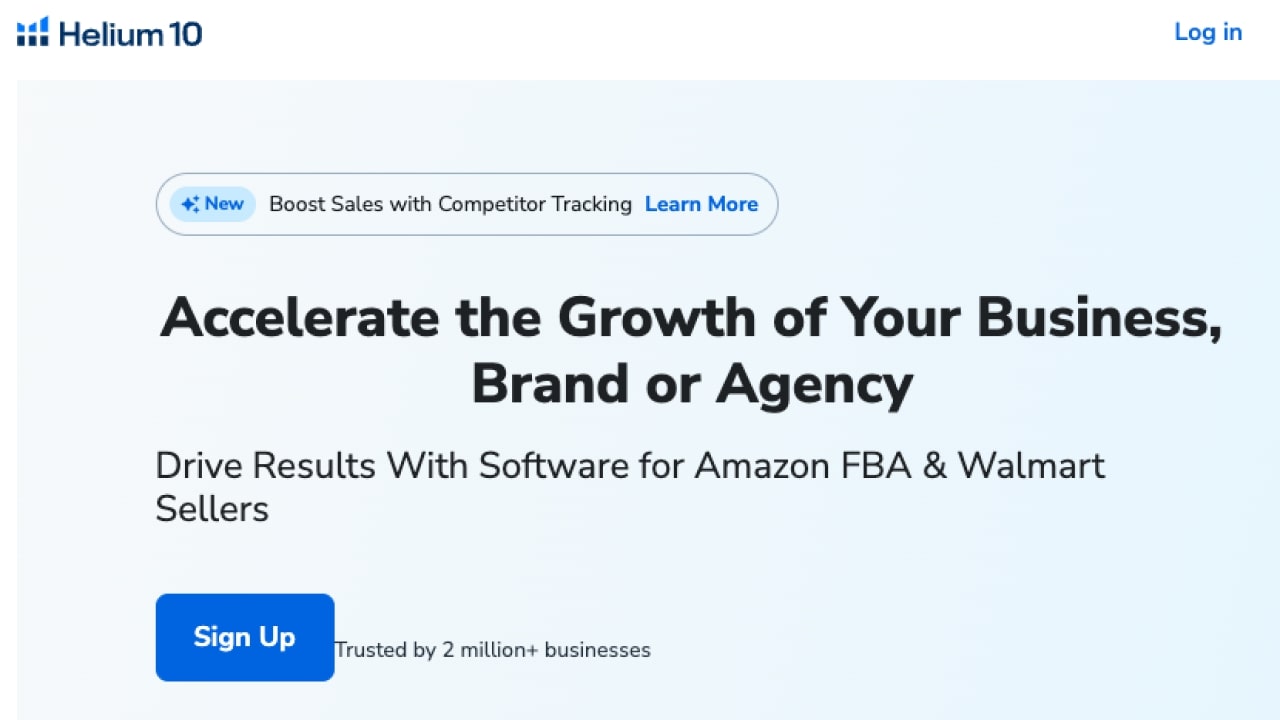
Helium 10 offers a suite of powerful tools designed specifically for Amazon sellers, including keyword research functionalities like Magnet and Cerebro. Magnet helps you find high-ranking keywords, while Cerebro provides insights into your competitors’ keyword strategies.
Key features:
- All-in-one toolkit. Helium 10 offers robust keyword research tools, including reverse ASIN lookup to see competitor keywords and keyword generation.
- Data-driven insights. See search volume, competition level, and other metrics to make informed keyword choices.
2. Jungle Scout
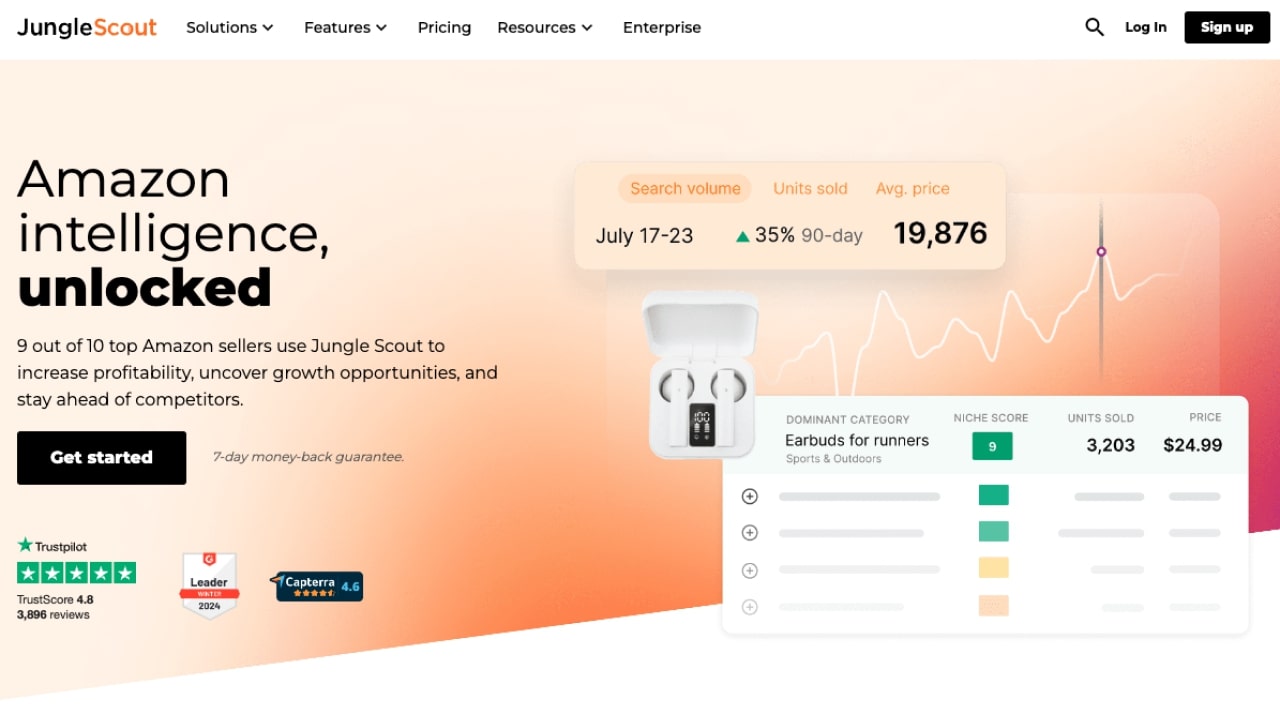
Jungle Scout offers more than just product research – it’s a comprehensive suite designed to empower both new and existing Amazon sellers.
Key features:
- Comprehensive market insights. Access real-time data and analytics to identify profitable product opportunities and understand competitive landscapes.
- Advanced keyword research. Utilize the Keyword Scout feature for in-depth analysis of consumer demand, keyword search volume, and competition to optimize listings and improve product visibility.
- AI-powered optimization. Leverage AI to automate and enhance advertising strategies, ensuring optimal bid placements and maximizing ROI (return on investment) for PPC campaigns.
3. Google Keyword Planner
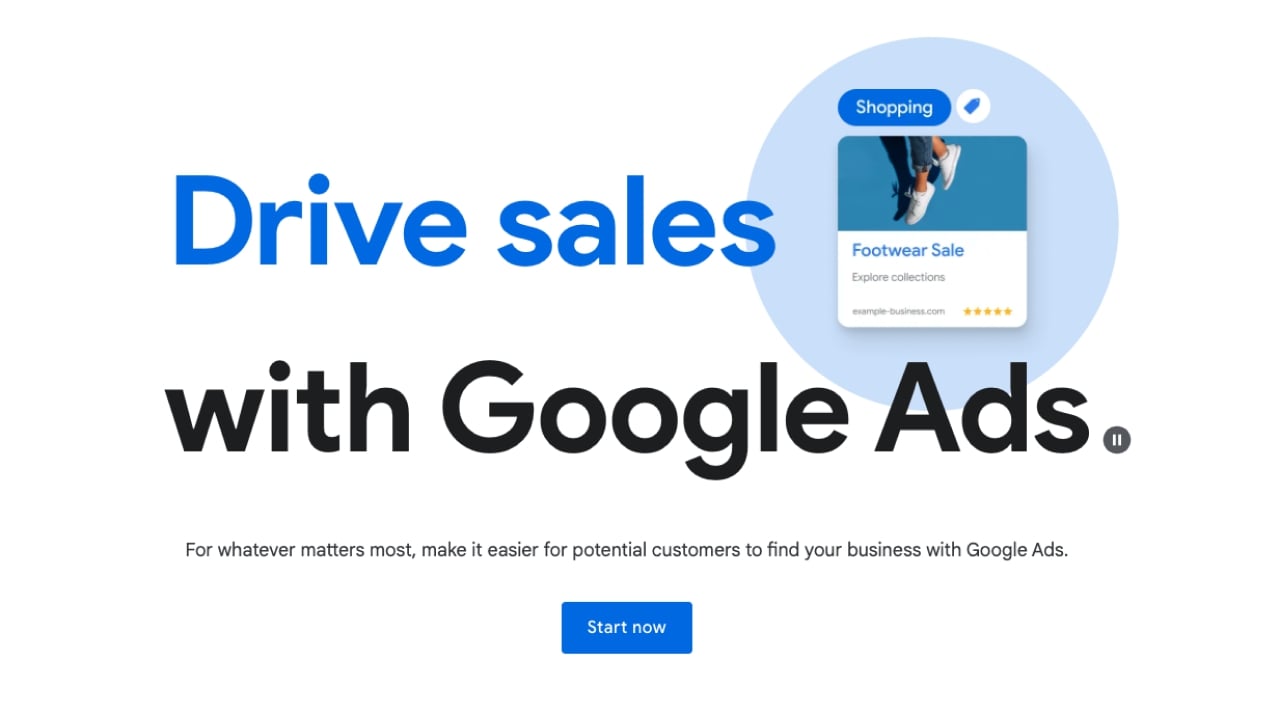
Transitioning from Amazon-specific tools, Google Keyword Planner is now under the umbrella of Google Ads. It offers a broader view of keyword trends and search volumes – pivotal for any comprehensive SEO strategy.
While its core audience includes Google Ads advertisers, this tool equally benefits Amazon sellers aiming to understand wider market behaviors and keyword relevancy.
Key features:
- Free option. It helps you discover keyword ideas and access estimated search volume data, enabling refined strategies for Amazon listings alongside potential Google Ads campaigns.
- Starting point. Ideal for initial keyword brainstorming and gaining insights into overall search trends. This makes it an essential tool if you’re looking to navigate the complexities of advertising on both Amazon and the vast network of Google search results and partner websites.
4. Perpetua
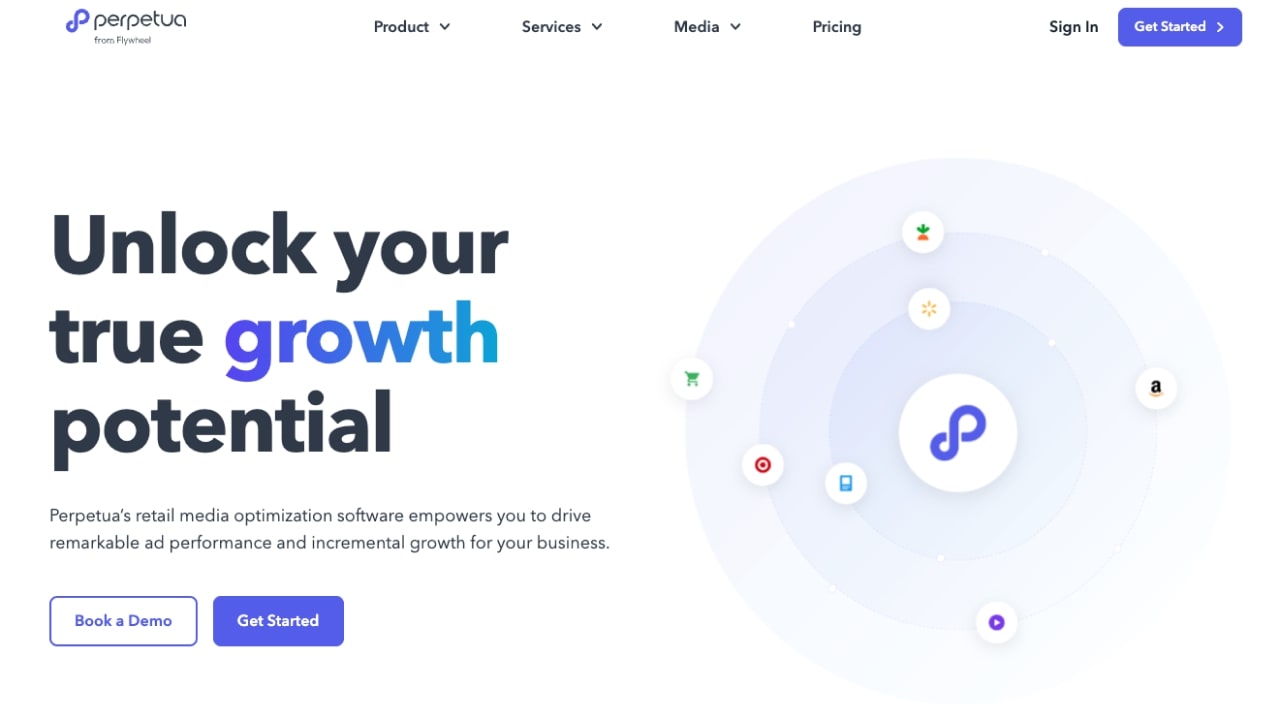
Perpetua goes beyond basic keyword research to offer comprehensive Amazon advertising software designed to drive sales and maximize product visibility on Amazon. This platform stands out for its optimization and intelligence software, which automates and streamlines creating, launching, and optimizing sponsored ads.
Perpetua is particularly beneficial for sellers aiming for strategic growth on Amazon, whether you’re just starting out or looking to increase your category share or brand awareness.
Key features:
- Always-on bid optimization. Automatically adjusts bids to meet target ACoS (advertising cost of sale), ensuring efficient campaign performance with minimal manual intervention.
- Keyword boost. Targets crucial keywords with strategic campaigns, placing products at the top of search results to maximize visibility and impact.
- Full-funnel tactics. Leverages Sponsored Brands and Amazon’s demand-side platform (DSP) to enhance brand presence across the entire customer journey, from awareness to purchase.
5. Ahrefs
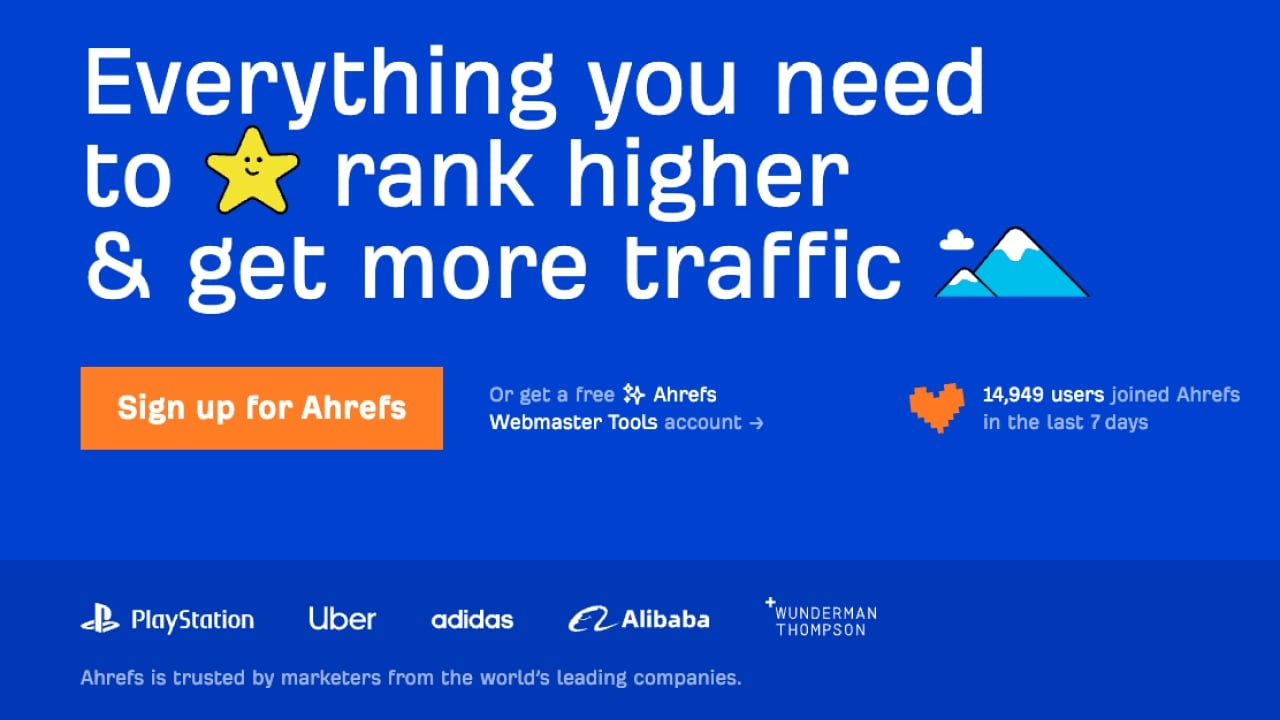
While not exclusively an Amazon tool, Ahrefs offers powerful keyword research capabilities that can be used for Amazon product listing optimization. Its Keywords Explorer provides insights into keyword difficulty, search volume, and click data.
Ahrefs is particularly useful for understanding broader market trends and potential search traffic from Google, which can be indicative of buyer interest on Amazon as well.
Key features:
- Monitor search trends. See how search traffic changes over time – valuable for identifying seasonal products or emerging niches on Amazon.
- Understand search intent. Ahrefs reveals why people search for certain terms, helping you tailor your product listings to better match shoppers’ needs.
Amazon SEO best practices: FAQ
To improve your Amazon ranking, focus on optimizing your product listings for search engines, particularly Amazon’s A10 algorithm.
This involves using relevant keywords in your product titles and descriptions, ensuring high-quality product images, and maintaining a strong sales history. Employing Amazon SEO tools can also provide insights to refine your strategy further.
Use Amazon Seller Central and specialized Amazon SEO tools to keep an eye on your keyword performance and make data-driven decisions to enhance your SEO strategy.
Amazon’s search algorithm, known as the A10 algorithm, ranks products based on relevance to the customer’s search query and overall customer satisfaction.
Factors such as keyword relevance, conversion rate, and customer feedback play a significant role in determining a product’s visibility in search results.
Optimizing Amazon listings: Conclusions
That concludes our guide on how to improve your Amazon search result optimization. Remember the main tips and practices to continuously improve and adapt your strategy.
By following these steps and leveraging the right tools, you can significantly enhance your Amazon SEO ranking, increase brand visibility, and boost your sales on the world’s largest online marketplace.
To further explore the nuances of online retail and expand your sales channels, we have a great piece on Selling on Walmart vs Amazon. This detailed comparison can help you decide where to focus your efforts for maximum impact.












